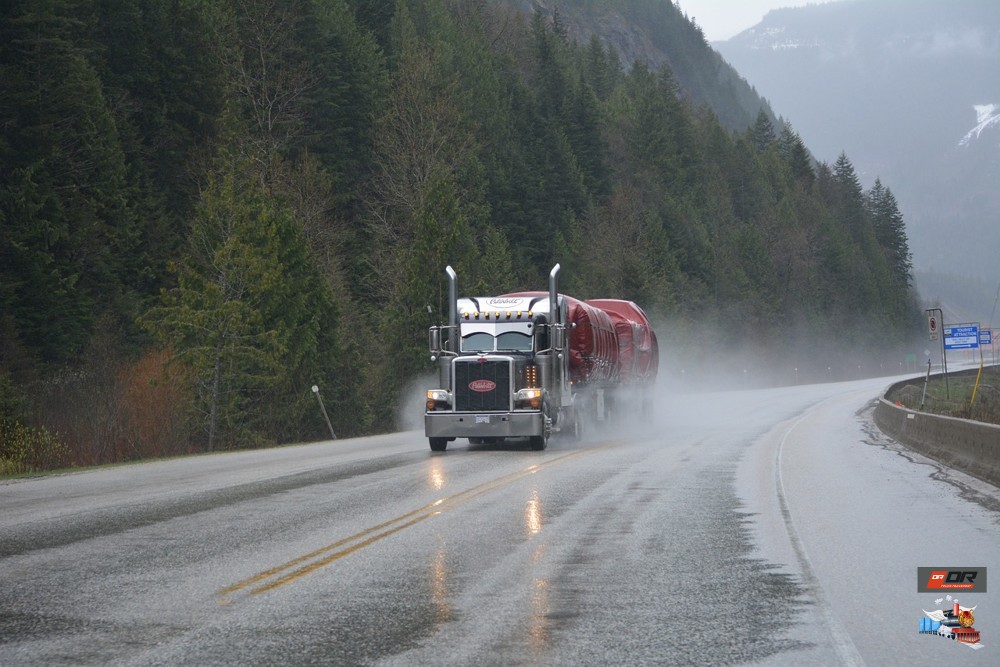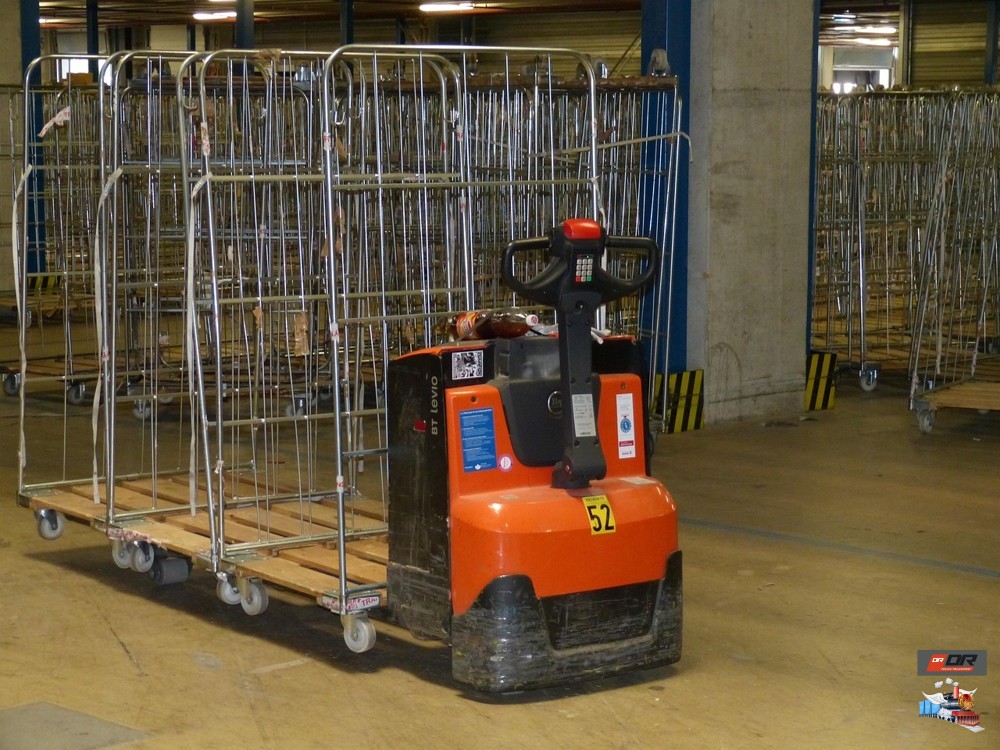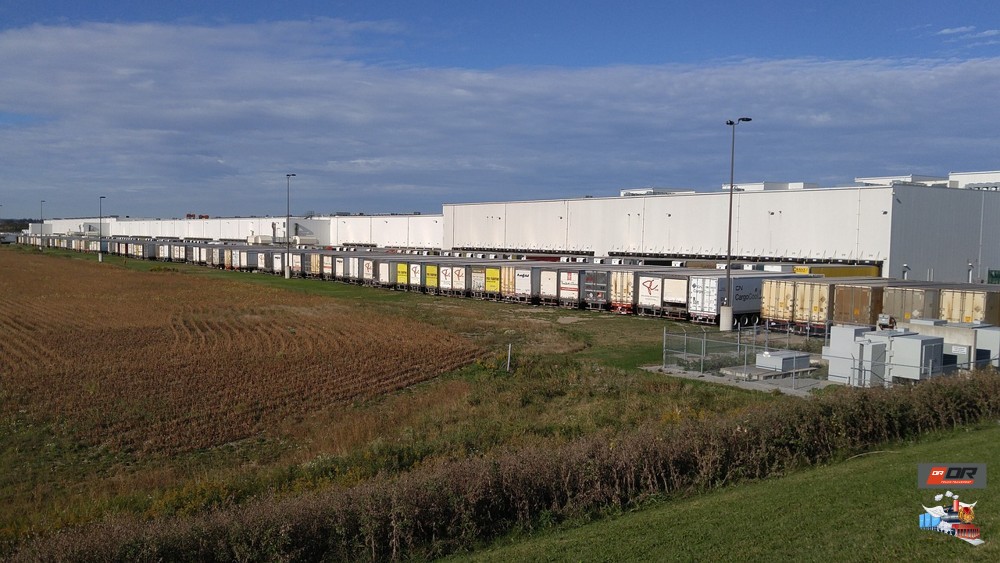Was sind die Hauptunterschiede zwischen FTL- und LTL-Versand?
Einführung: Frachtunternehmen müssen zwischen zwei gängigen Straßentransportmethoden wählen: Komplettladungen (FTL) Und Teilladungen (LTL)Das Verständnis der FTL- und LTL-Versandoptionen ist entscheidend für die Verwaltung von Kosten, Zeitplanung und Sendungsgröße. Diese Begriffe tauchen häufig in der internationalen Logistik auf, insbesondere auf Routen wie China–Russland, China–Zentralasien oder China–Weißrussland. FTL bedeutet typischerweise die Anmietung eines ganzen LKWs für einen Versender, während LTL den Raum auf mehrere Versender aufteilt. Die Kenntnis der Unterschiede zwischen FTL und LTL hilft Unternehmen, die richtige Transportart für ihre Bedürfnisse zu wählen.

Was sind FTL und LTL?
- FTL-Versand (Full Truckload) Bei Full Truck Load (FTL) wird der gesamte LKW von einem einzigen Spediteur gebucht. Eine Branchenquelle erklärt: „Komplettladungen (FTL) bedeuten, einen kompletten, dedizierten LKW für eine Sendung zu mieten, der ohne Zwischenstopps direkt zum Zielort fährt.“ Dieses Punkt-zu-Punkt-Modell eignet sich ideal für große, schwere oder zeitkritische Ladungen. Da nur die Fracht eines Kunden an Bord ist, sind FTL-Sendungen in der Regel schneller und erfordern weniger Handling.
- LTL-Versand (Less Than Truckload) konsolidiert Fracht von mehreren Spediteuren in einem Lkw. Zugelassene Spediteure weisen darauf hin, dass LTL-Sendungen „in denselben Lkw verladen werden, sodass sich die Spediteure den Platz teilen können. Da alle Sendungen zu ihren Zielen unterwegs sind, legt der Lkw unterwegs mehrere Zwischenstopps ein.“ LTL wird typischerweise für kleinere Sendungen (in der Regel 68–700 kg oder etwa 6–10 Paletten) verwendet. Beim LTL-Versand zahlen Kunden nur für den von ihnen genutzten Lkw-Teil, was ihn zu einer kostengünstigen Option für Teilladungen macht.
Da jede Methode Stärken und Schwächen hat, ist es hilfreich, FTL und LTL anhand mehrerer Faktoren zu vergleichen.

Hauptunterschiede zwischen FTL- und LTL-Versand
Unternehmen wählen zwischen FTL- und LTL-Versand sollten berücksichtigen:
- Kosten: Bei FTL zahlen Sie für den gesamten LKW, unabhängig von seiner Beladung. Das macht FTL für kleine Sendungen teurer. Im Gegensatz dazu zahlen LTL-Versender nur für den Platz oder das Gewicht, den sie auf dem LKW nutzen. Bei kleineren Ladungen ist LTL in der Regel günstiger, da die Kosten auf mehrere Versender aufgeteilt werden. Ist Ihre Fracht jedoch so groß, dass sie fast einen ganzen LKW füllt, bietet FTL Skaleneffekte – die Stückkosten können bei vollem LKW niedriger sein.
- Transitzeit und Geschwindigkeit: FTL-Sendungen werden ohne Zwischenstopps direkt vom Abgangs- zum Zielort befördert. Dies bedeutet in der Regel eine schnellere und planbarere Zustellung. Ein Leitfaden weist darauf hin, dass FTL „nicht auf das Befüllen der Anhänger warten muss und direkt zum Zielort fährt“, was in der Regel schneller ist als LTL. Im Gegensatz dazu werden LTL-Lkw mehrfach abgeholt und wieder abgeliefert, wodurch die Zustellung länger dauert. Experten weisen darauf hin, dass die vielen Zwischenstopps bei LTL zu einer längeren Lieferzeit führen, sodass die Laufzeiten bei LTL in der Regel länger sind als bei FTL.
- Ladegröße und Ladung: FTL eignet sich für große oder schwere Sendungen – im Wesentlichen für jede Fracht, die einen ganzen Lkw füllt (oft über 10 Paletten oder über 7 kg). LTL ist für kleinere Sendungen. Liegt Ihre Fracht unter diesen Schwellenwerten, ist LTL wahrscheinlich kostengünstiger. (Einige Spediteure bieten sogar „Volumen-LTL“-Dienste für mittelgroße Ladungen an, die zu groß für Standard-LTL sind, aber keinen vollen Lkw benötigen.)
- Handhabung & Risiko: FTL-Sendungen werden einmal am Ursprungsort beladen und einmal am Zielort entladen, mit minimalem Zwischenumschlag. Dadurch ist das Risiko von Beschädigungen oder Verlusten bei FTL geringer. Bei LTL werden Waren häufig durch Verteilzentren transportiert und unterwegs zwischen Anhängern umgeladen, was mehr Handhabungsschritte bedeutet. Approved Forwarders weist darauf hin, dass die mehrfachen Ladezyklen bei LTL das Schadensrisiko erhöhen.
- Flexibilität & Leistungen: LTL bietet Flexibilität für variierende oder kleinere Sendungen – Sie müssen keinen ganzen LKW beladen, um den Transport zu buchen. LTL-Spediteure bieten aufgrund ihres umfangreichen Netzwerks oft zusätzliche Dienstleistungen an (wie Lieferungen mit Hebebühne, planmäßige Abholungen oder spezielle Handhabung). Im Gegensatz dazu erfordert FTL eine dedizierte Großsendung und hat in der Regel eine einfachere Routenführung. LTL ist im Allgemeinen anpassungsfähiger für unregelmäßige Volumina, während FTL starrer, aber unkomplizierter ist.
- Sicherheit: Bei einem FTL-Transport bleibt die Ladung durchgehend versiegelt in einem LKW mit einem Fahrer. Das macht sie generell sicherer. Wie WWEX anmerkt, ist FTL-Fracht aufgrund des geringeren Umschlags „im Allgemeinen sicherer“ als LTL. LTL-Fracht, die mit anderen geteilt wird, kann zwischen LKWs transportiert werden, was Haftungsfragen aufwerfen kann.
- Ideale Szenarien: Zusammenfassend lässt sich sagen, dass FTL sich am besten für große, hochwertige oder zeitkritische Sendungen eignet, die von einer Direktlieferung profitieren. LTL eignet sich am besten für kleinere Ladungen, bei denen Kosteneinsparungen wichtig sind. Die folgende Tabelle zeigt die wichtigsten Vorteile der einzelnen Transportarten:
| Merkmal/Faktor | FTL (Komplettladung) | LTL (Teilladungen) |
|---|
| Kosten | Höhere Fixkosten (Preis für den gesamten LKW); niedrigere Stückkosten bei vollem LKW | Geringere Kosten für kleine Ladungen (Sie zahlen nur für den genutzten Platz) |
| Laufzeit | Schnellerer Transit (keine Zwischenstopps) | Langsamerer Transit (mehrere Stopps/Lieferungen) |
| Tragfähigkeit | Am besten für große Sendungen (volle LKW-Kapazität) | Am besten für kleinere Sendungen (wenige Paletten) |
| Handhabung | Minimale Handhabung (einmaliges Be-/Entladen) | Mehr Handling (mehrere Terminals/Hubs) |
| Sicherheit | Hoch (spezieller LKW, versiegelt) | Niedriger (gemeinsam genutzter LKW, mehrere Transfers) |
| Flexibilität | Weniger flexibel (Volllast erforderlich, fester Zeitplan) | Flexibler (Teilladungen jederzeit versenden) |
| Ideal für | Dringende, zerbrechliche oder sehr große Sendungen | Kleinere Sendungen, bei denen die Kosten entscheidend sind |
Wann wird FTL und wann LTL verwendet?
Die Wahl zwischen FTL und LTL hängt von den Prioritäten Ihrer Sendung ab. Berücksichtigen Sie:
- Größe & Gewicht: Wenn Ihre Ladung mehr als etwa 7.800 kg oder 10 Paletten wiegt, ist in der Regel ein Komplettladungstransport (FTL) erforderlich. Bei deutlich kleineren Ladungen ist LTL wirtschaftlicher.
- Geschwindigkeitsbedarf: Für zeitkritische Lieferungen wird FTL bevorzugt, da dadurch Verzögerungen im Hub vermieden werden. (FTL ist oft die „schnellere Wahl“, während die zusätzlichen Stopps bei LTL den Transport naturgemäß verlangsamen.)
- Wert/Zerbrechlichkeit: Hochwertige oder zerbrechliche Güter bevorzugen FTL (weniger Handhabung). Für Routineartikel ist LTL ausreichend.
- Budget: Bei knappem Budget senkt LTL die Kosten, indem nur der genutzte Platz berechnet wird. Beachten Sie jedoch, dass sich langsamere Transporte negativ auf die Fahrpläne auswirken können.
- Route & Leistungen: Prüfen Sie die verfügbaren Routen. Für einige abgelegene Ziele sind Teilladungen möglicherweise nur über Konsolidierungszentren verfügbar. Komplettladungen ermöglichen direktere Routen.
In der Praxis wägen Frachtmanager diese Faktoren (Größe, Geschwindigkeit, Kosten, Produkttyp) ab, um für jede Ladung die beste Methode auszuwählen.

FTL und LTL auf wichtigen eurasischen Routen
Moderne Handelsrouten, die China mit Russland, Zentralasien und Weißrussland verbinden, zeigen, wie sowohl FTL als auch LTL genutzt werden:
Von China nach Russland
Auf der Straßenkorridor China–Russland, sowohl FTL als auch LTL sind üblich. Anbieter bieten tägliche LKW-Transporte von China nach Russland (und Europa/GUS) mit Optionen für FTL-Versand von China nach Russland sowie LTL. Die typische Transitzeit auf der Straße beträgt etwa 14–19 Tage. Komplettladungen auf dieser Route werden direkt abgewickelt und häufig von Exporteuren großer Maschinen oder Schüttgüter gebucht. LTL-Sendungen transportieren kleinere Ladungen für mehrere Kunden, was Kosten durch zusätzliche Zwischenstopps spart. Eine Logistik-Website weist darauf hin, dass per Lkw aus China versandte Güter in der Regel innerhalb von etwa 20 Tagen in russischen Städten eintreffen, was als „effizient und kostengünstig“ gilt. Beispielsweise bietet Dear-Railway Container Transport spezialisierte Komplettladungsdienste auf diesem Korridor an – sogar zertifizierte Komplettladungen für Chemietransporte zwischen China und Russland. dearrailwaytransport.com – Hervorhebung, wie spezielle Kompletttransportdienste für empfindliche Fracht genutzt werden.
Von China nach Zentralasien
Lieferung nach Zentralasiatisch Länder (z. B. Kasachstan, Usbekistan, Kirgisistan) verwenden häufig einen Mix aus Verkehrsträgern. Lkw fahren über Grenzpunkte wie Khorgos, Dostyk oder Alashankou. Auf diesen Routen bieten Logistikanbieter auch FTL- und LTL-Optionen an. Ein Betreiber beispielsweise bewirbt tägliche Abfahrten in die Mongolei/Zentralasien mit LTL- und FTL-Versanddiensten nach Zentralasien. Versender von Massengütern oder vollen Anhängern nutzen FTL, während kleinere Händler LTL-Kombinationen verwenden. Zudem kann der moderne Güterverkehr von China nach Zentralasien Straße und Schiene kombinieren. Schienentransporte über Kasachstan-Russland-Weißrussland sind im Durchschnitt nur etwa 5,8 Tage schneller als die Bahn. Viele Lieferketten in dieser Region nutzen die Bahn (einen FTL-ähnlichen Containerdienst) für den Langstreckentransport und Lkw für die Endlieferung. Insgesamt sind FTL- und LTL-Lkw-Transporte in Zentralasien verfügbar, die genaue Wahl hängt jedoch vom Volumen, der Zeitplanung und den Kostenanforderungen der jeweiligen Fracht ab.
Von China nach Weißrussland
Weißrussland ist ein strategischer Knotenpunkt auf der China-Europa-Route (der „Neuen Seidenstraße“). Etwa 82 % des transeurasischen Containerverkehrs laufen über Kasachstan, Russland und Weißrussland. In diesem Korridor werden große Sendungen häufig per Bahn oder FTL nach Weißrussland und darüber hinaus transportiert. Im Straßengüterverkehr FTL-Transporte nach Weißrussland Normalerweise reisen sie auf dem Landweg durch Kasachstan und Russland nach Weißrussland und transportieren volle Ladungen direkt nach Minsk oder in die Nähe. LTL-Sendungen nach Weißrussland Die Ladungen können vor der endgültigen Auslieferung in europäischen Hubs oder an belarussischen Terminals konsolidiert werden. Obwohl spezifische Statistiken zur Aufteilung von Komplett- und Teilladungen (FTL) rar sind, betrachten Unternehmen Sendungen nach Weißrussland oft als Teil einer umfassenderen China-Europa-Logistik. Ein Teil der Vollcontainerfracht (FTL) wird per Bahn nach Weißrussland transportiert, während kleinere Sendungen gemischte Straßenverbindungen nutzen können. In der Logistik bedeutet die Logistik von China nach Weißrussland, Geschwindigkeit und Kosten durch multimodale Dienstleistungen in Einklang zu bringen. Anbieter betonen, dass die Integration von Straße und Schiene zur Optimierung von Komplett- und Teilladungen auf dieser Route beiträgt.

Abschluss
FTL- und LTL-Versand Beide bieten unterschiedliche Vorteile. FTL bietet einen eigenen Lkw, schnellere Transportzeiten und mehr Sicherheit für große oder hochwertige Ladungen. LTL teilt die Kosten und bietet flexible Möglichkeiten für kleinere Sendungen. Wir haben die wichtigsten Unterschiede in Bezug auf Kosten, Geschwindigkeit, Handhabung und ideale Einsatzmöglichkeiten zusammengefasst. Bei der Entscheidung sollten Versender die Ladungsgröße, den Lieferzeitplan und das Budget berücksichtigen.
Auf Routen von China nach Zentralasien, Russland oder Weißrussland werden beide Transportarten parallel eingesetzt. Großexporteure nutzen FTL-Transporte auf Langstreckenkorridoren, während kleinere Händler auf LTL-Konsolidierung setzen. Unternehmen wie Dear-Railway Container Transport bieten integrierte FTL- und LTL-Lösungen für diese Regionen an. dearrailwaytransport.com, und hilft Kunden, Frachtkosten und Lieferzeiten zu optimieren. Durch das Verständnis der Vorteile von FTL und LTL sowie der Unterschiede können Unternehmen fundierte Entscheidungen treffen und sicherstellen, dass ihre Waren effizient auf den wichtigsten eurasischen Handelsrouten transportiert werden.


















 IPv6 NETZWERK UNTERSTÜTZT
IPv6 NETZWERK UNTERSTÜTZT
